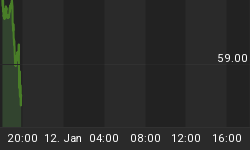If oil is the most important commodity, then copper cannot be far behind. Being used extensively in electrical power cables, electrical equipment, automobile radiators, cooling/refrigeration tubing, heat exchangers, artillery shell casings, optical fibre, water pipes, drain pipes, plumbing and even jewellery, this reddish-brown metal is a commodity that the world can ill afford to be in short supply of.
But the fact of the matter is that copper is yet another metal that is in a mining deficit that was predicted to be 700,000 tons in 2004 by the USGS 2005 summary. That would be about 5% of the estimated 14.5 million tons produced worldwide. As a result, stockpiles have reduced and prices have increased to over the $2 a pound mark recently.
Against this backdrop, I was nevertheless surprised to read recent comments by Ross Beaty, the chairman of Pan American Silver and Lumina Copper, that global copper production was approaching its own version of "Peak Oil" or shall we say "Peak Copper"?
His remarks can be found in this article. But his main points centred on such facts as:
- Only 56 new copper discoveries have been made in the last 30 years.
- He predicts Chilean copper output to peak about 2008 (Chile is the world's main producer).
- A lack of smelter and refinery supply is creating another bottleneck.
- 21 of the 28 largest copper mines in the world are not amenable to expansion.
- Many large copper mines will be exhausted between 2010 and 2015.
Does not all this sound familiar to the arguments of the Peak Oil debate?
- New oil discoveries of the last 30 years are dwarfed by those of previous decades.
- Saudi Arabia, the world's main oil producer may peak soon.
- A lack of refining capacity is causing bottlenecks in gasoline, etc.
- Many of the super giant oil fields in the world cannot have their production expanded or even maintained.
- Supergiants such as Ghawar, Cantarell, Burgan and others will be well on the decline path by 2015.
When we look at the comparative reserve numbers for oil and copper we also get a sense of an impending dual peak scenario. Worldwide economic reserves of copper are stated to be 470 million tonnes by the USGS 2005 summary for copper. If the 2004 mine production figure of 14.5 million tonnes is held steady into the future, copper would be exhausted within 33 years.
If we also assume about 1 trillion barrels of oil remains to be economically recovered worldwide with a current annual production of 30 billion barrels then we come out with a similar reserve lifetime of 33 years. Coincidence? Not if we realise that increased energy consumption means increased metal consumption. The two go hand in hand.
When might this peak come around? That is probably a little easier to calculate than oil since secrecy about copper reserves is much less prevalent. But the shocking news that Chile, which produces one third of the world's copper, may begin to decline irreversibly in 2008 suggests that as Chile goes, so goes the world.
When Chile peaks, the world peaks.
Sounds a bit like the peak oil mantra "When Saudi Arabia peaks, the world peaks".
However, if you believe that reserves are purely a function of price, you may take comfort in the recent USGS suggestion that the total reserve base of copper (economic and uneconomic) is not the 940 million tonnes of its 2005 summary but a whopping 1.6 billion tonnes! Sadly, some reading between the lines of that statement reveals a more sobering truth that half of that estimated tonnage does not appear to have been discovered yet!
Perhaps the USGS is indulging in the same over-optimistic numbers that we have seen it display in its estimates for crude oil. We think so and will continue to work on that assumption.
In conclusion, what are the ramifications of copper supply diminishing in the face of potential increased demand? The answer is far higher prices to begin with. The second answer is substitution of applications using aluminium, titanium and plastics - depending of course on how strained their resource base is.
There is one hope for those consumers who yearn for lower copper prices. When Peak Oil finally arrives, we'll probably enter a severe economic crisis that will kill demand for copper. Then they'll have their lower prices and unlike gold and silver that will see fevered demand as safe haven investments, nobody is going to fly to copper as a store of value.
Roland Watson writes the investment newsletter The New Era Investor that can be purchased for an annual subscription of $99. To view a sample copy of the newsletter, please go to http://www.newerainvestor.com/ and click on the "View Sample Issue Here" link to the right. Comments are invited by emailing the author at newerainvestor@yahoo.co.uk.















